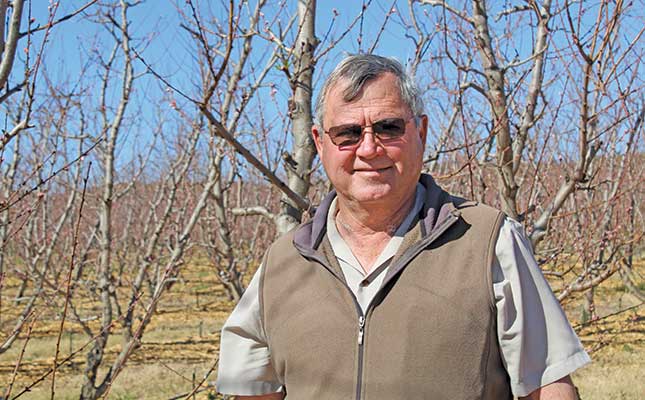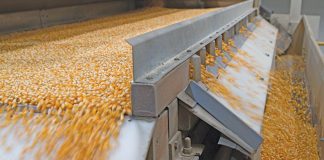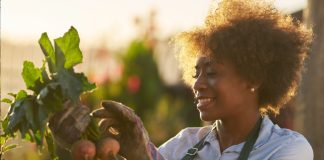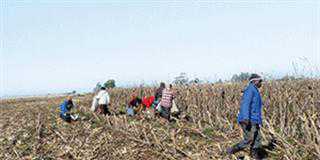
“Don’t be the Kodak of farming,” says Leon Eksteen, CEO of Bufland Boerdery in Mookgophong, Limpopo.
Referring to the photography company’s inability to keep up with the times, which saw them lose their footing in the industry, Eksteen cautions farmers not to get stuck in an outdated mindset.
“We need to make sure that what we produce will have a market, which means we have to keep up with changes in consumer demand.
“Consumers don’t want to ingest chemicals, so we as farmers will increasingly be limited in what we can use. Farmers who don’t start finding ways to [work] without these chemicals will find themselves redundant,” he says.
The Eksteen family began shifting towards more natural farming practices in the early 2000s on their diversified crop, orchard and cattle farm. Although they have not made organic farming a specific goal, they are, nonetheless, putting more and more emphasis on reducing Bufland’s chemical footprint.

The underlying principle of their farming philosophy is the attention they give to improving soil health through the use of manure and mulch. Eksteen notes that it takes years to start reaping the benefits of such a practice, and the results are not immediate, as they would be with chemicals.
“But the difference is that the [manure and mulch] fix soil problems permanently, whereas chemicals only treat the symptoms. It’s like having a knee injury: the more expensive operation solves the problem, whereas pills only minimise the pain.”
The Eksteens base their manure and mulch decisions on cost-effectiveness and practicality. Over the years, they have applied woodchips, plant material, cattle manure and lime, and Bufland’s soils have improved to such an extent that their irrigation requirement has been reduced by 25%. The pH of the soil has also improved significantly from 3 to 6.
At the same time, water run-off has been reduced, which in turn has helped reduce the leeching of nutrients. Higher levels of bacteria in the soil have also assisted in increasing the bioavailability of nutrients.
Yet another benefit is that by strengthening the plants through optimal nutrient and water uptake, they become less susceptible to pests and diseases, further reducing the need for chemical pesticide.
“This is at the core of farming with nature. The weakest plants will always be attacked first, so if you keep your plants in tip-top shape, they won’t be susceptible to pests,” says Eksteen.
Making the best use of mulch
The farm makes use of any available material for mulch. When the stone fruit and citrus trees are pruned, the branches are chipped and placed under the trees and in the rows. In addition, straw is packed under the stone fruit trees, while woodchips are used to cover the soil surface in the orchards.
Eksteen admits that these practices aimed at increasing the humus layer on the soil are costly.
“Woodchips are expensive, especially considering that they need to be transported from Tzaneen. But we chose to invest in the soil to get a long-term return, rather than perpetually applying chemical fertilisers.”
In a quest to improve the economics of mulching, Eksteen is conducting trials to find the material that best balances cost and efficiency. Woodchips, lucerne and cotton stalks are amongst those being explored.
“The cotton stalks need to be baled on the farm where they are produced, which adds to the cost, but the transportation distance is less than for the woodchips.
“To get the product to the farm and apply it to the land costs R10 000/ha for lucerne, R15 000/ha for woodchips, and R11 000/ha for cotton stalks. But now we need to determine how long each lasts on the lands to discover the true cost. If cotton stalks must be reapplied every year to keep the soil covered, but woodchips can be reapplied only every three years, the woodchips work out much cheaper.”
Maize stalks from Bufland are also dumped by the truckload onto the croplands and spread by hand. No plant residue is removed from any of the lands and cattle do not graze the stover, as the goal is to get every gram of plant material to return to the soil.
Eksteen notes that this crop residue needs to be worked into the soil and requires about four rounds of shallow tilling to be mixed in properly. “We don’t practise no-till because we have a robust rotation system under the centre pivots that includes seed maize, dry beans, Peppadew peppers and potatoes.
“We do shallow tillage, going in about 150mm with a disc, and we then work the soil with a chisel plough to loosen it up, which is a minimum-till method. So our topsoil stays on top and the bottom soil stays at the bottom.
“Years ago, we all used to take the soil from the bottom and place it on top. All the micro-organisms would die, and we’d spend all our efforts trying to get life back into the soil, only to plough it again the next year and repeat the process. We really shot ourselves in the foot!”
Making use of manure
Manure is a healthy fertiliser, adding the micro-elements zinc, manganese, iron, sulphates, calcium and magnesium to the soil. Eksteen and his team have been applying it to Bufland’s lands for over 30 years.
Initially, they applied it only to problem areas where the soil needed to be rectified, but after seeing its benefits, they began spreading it generously across the entire farm.
“When we started applying manure, it was because we had areas within a centre pivot where the maize would reach only half the height of the rest. It was tempting to ignore this problem, considering the effort and cost to rectify it. But when we added up the cost of the inputs, time and labour we were spending on an entire land, yet still not achieving uniform yield, we started to think differently. Suboptimal areas can’t be ignored; they pull the entire farm’s production statistics down. It costs money to correct the soil, but it costs more in yield loss if you don’t!” says Eksteen.
After many years of applying compost to the problem areas, the entire area under irrigation is now producing optimally. And today, all the centre pivot lands receive equal applications of compost, totalling 25t/ha to 30t/ha, every three years. This is carried out in winter, which coincides with the feedlots’ cleaning regime.
Eksteen says they are fortunate to have a large feedlot nearby from where they can collect the manure, as transport costs are an important factor.
“We also have an arrangement with another farmer where we clean his kraal and get a portion of the manure, and we also use manure from our own feedlot.”
The nutrient levels of the manure are measured before application to ensure that the crops are not given too much or too little.
“The manure contains nitrogen (N), phosphate (P) and potassium (K), which we take into account when working out how much extra NPK fertiliser we need to add, as well as the overall cost of our inputs. It also provides micro-elements that aren’t present in the fertiliser. The wide spectrum of nutrients and micro-organisms in the manure adds to the fertility of our soil and we can get away with using less chemical fertiliser.”
Eksteen cautions that manure applications should be monitored carefully. He and his team found that after many years of applying manure, P levels in the stone fruit orchards were unhealthily high, so they halted the practice.
“The phosphate content of the manure is only 1%, but if you apply tons and tons to a land, it quickly adds up. An oversupply of one nutrient can cause another nutrient to become unavailable to the plant.
“We also found that because our soil was healthier, the nutrients were more available to the plants. This included phosphate, which meant that our levels were climbing even faster.”
Lowering input costs
Bufland’s natural farming practices have reduced the input costs of pesticides and fertilisers. Enhanced water retention in the soil also means that the farm now has more water available to use on other crops, thereby expanding production.
“The cost of applying manure is equal to the savings in fertiliser. But the long-term effect is much greater, because we’re building up the soil and, in the long run, this brings down our costs. The plants are healthier, the soil structure is better and water retention has improved, so less irrigation is needed and there’s less run-off.
“The first thing that becomes noticeable when plant health starts to improve is that leaf diseases like rust [occur] far less [frequently], so less chemical fertiliser is necessary.”
Bufland has reduced its chemical applications by about 10%, while irrigation has decreased 25%.
“Previously, when we irrigated the lands, a huge volume of water would run off and collect on the side. This doesn’t happen anymore; every drop is absorbed and held in the soil, so we get further with less water. Because we’re dependent on rain, we really need to use each drop optimally.
“With less water run-off, we also have less run-off of inputs. We use fertigation, so it’s a double loss if water runs off instead of being absorbed. The soil is the reserve tank for the crop, so if water remains here, it’s available for the plants.”
For farmers considering adopting nature-based farming, the most important step is to make the mindshift and see it through, stresses Eksteen.
“If you don’t believe in it, then you’ll find ways to prove that the alternative is the best way to farm. You need to do research and then make sure you do the right things at the right time to get the mileage out of what you’ve done.
“It doesn’t help to apply manure and wait until the following year to work it into the soil. By that time, the micro-organisms [in the manure] would have dried out in the sun and died.
“When summer arrives and the temperature rises, you need to stimulate the micro-organisms so that they can start working in the soil. Feed them humic acid and ensure they have everything they need to thrive. Chemicals that destroy bacteria and dry out the soil must be avoided at all costs.”
Eksteen says that a nature-based approach often fails when a producer tries to combine this way of farming with the incorrect chemicals.
“If you’re not careful, you run the risk of reversing all the good work you’ve done by applying chemicals that kill the beneficial bacteria. Choose products that work in harmony with them.”
Email Leon Eksteen at [email protected].












